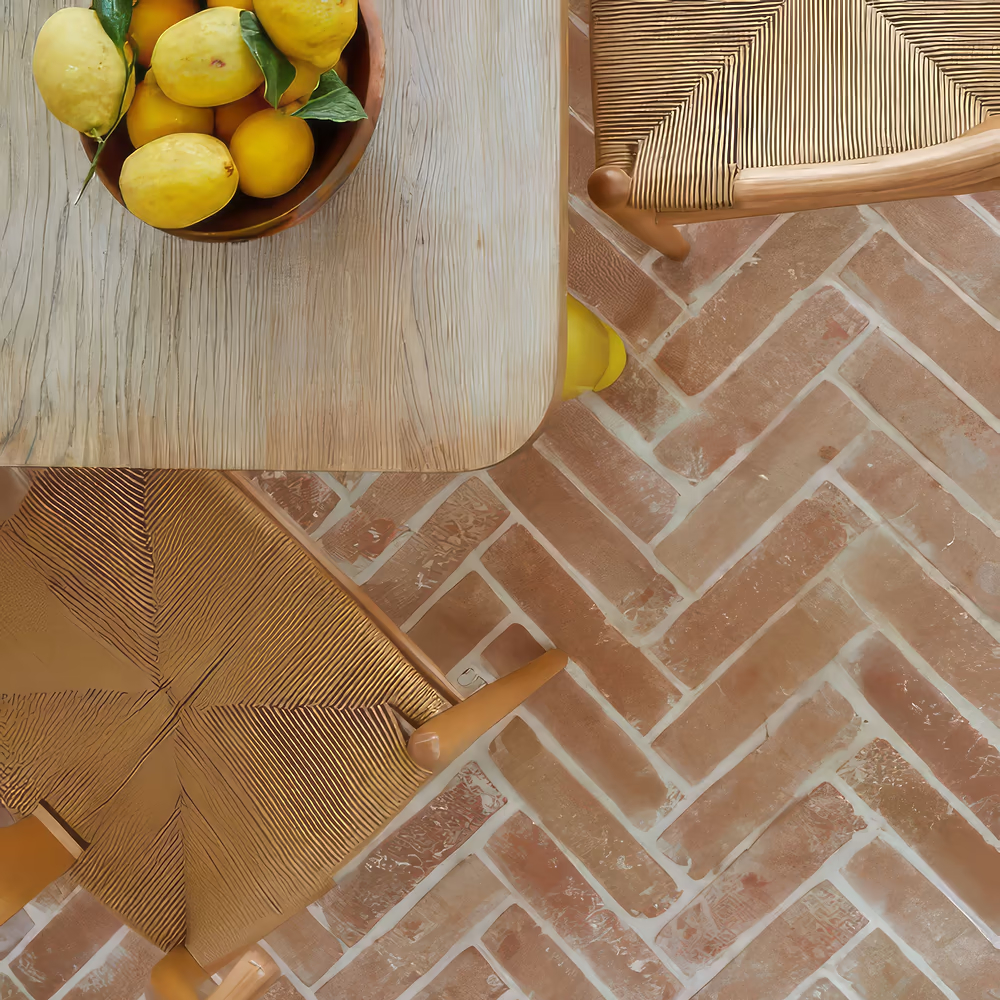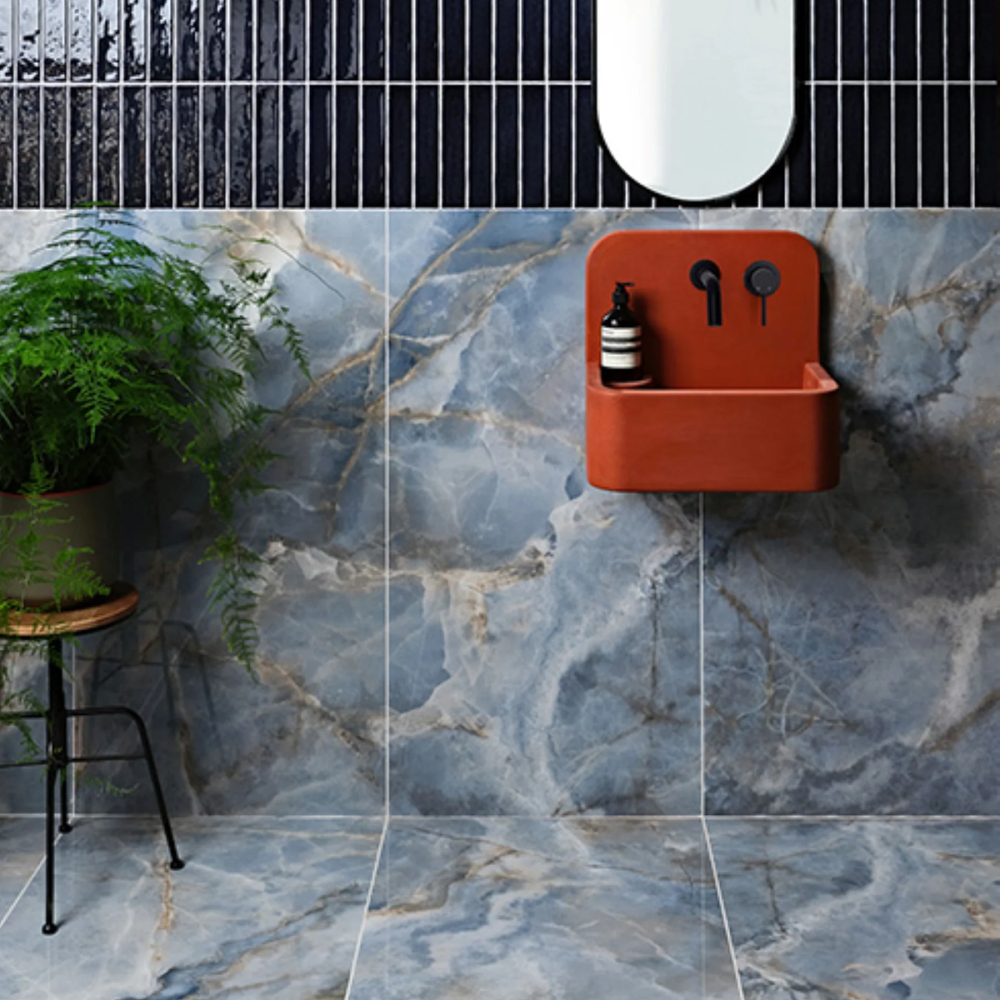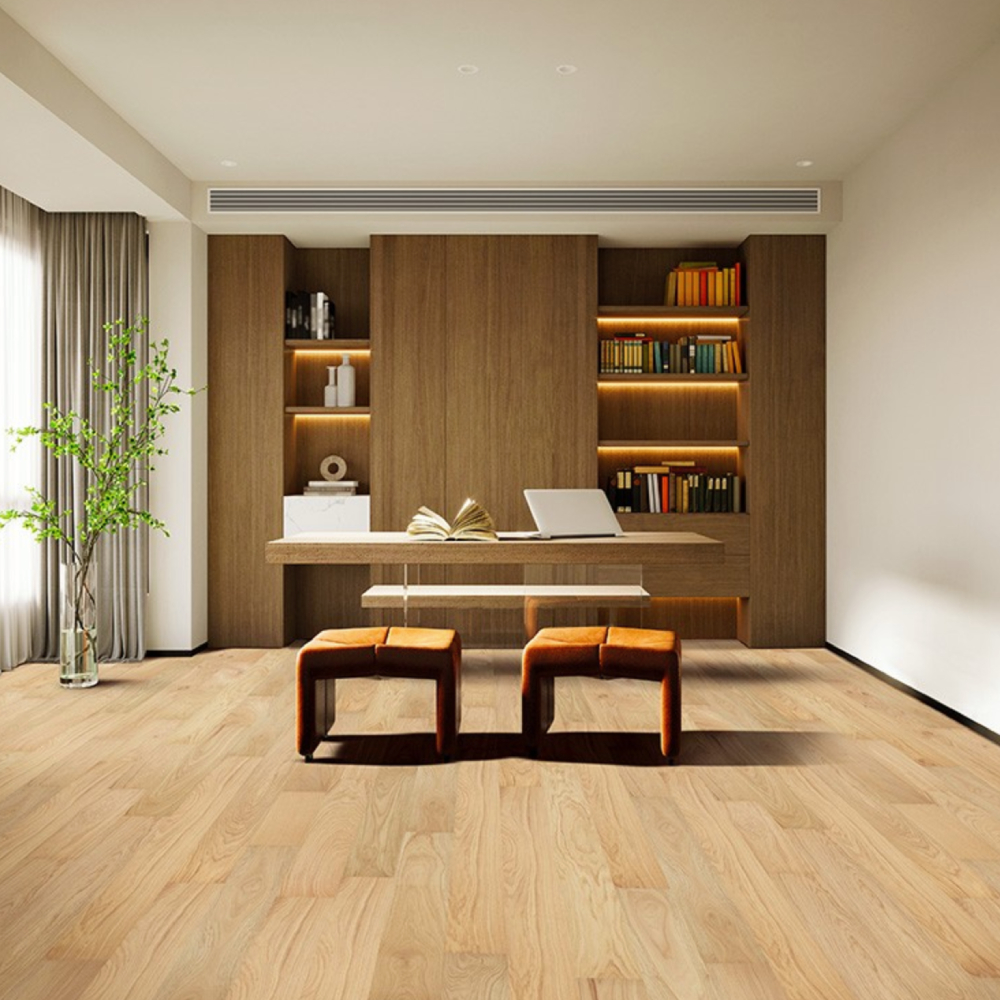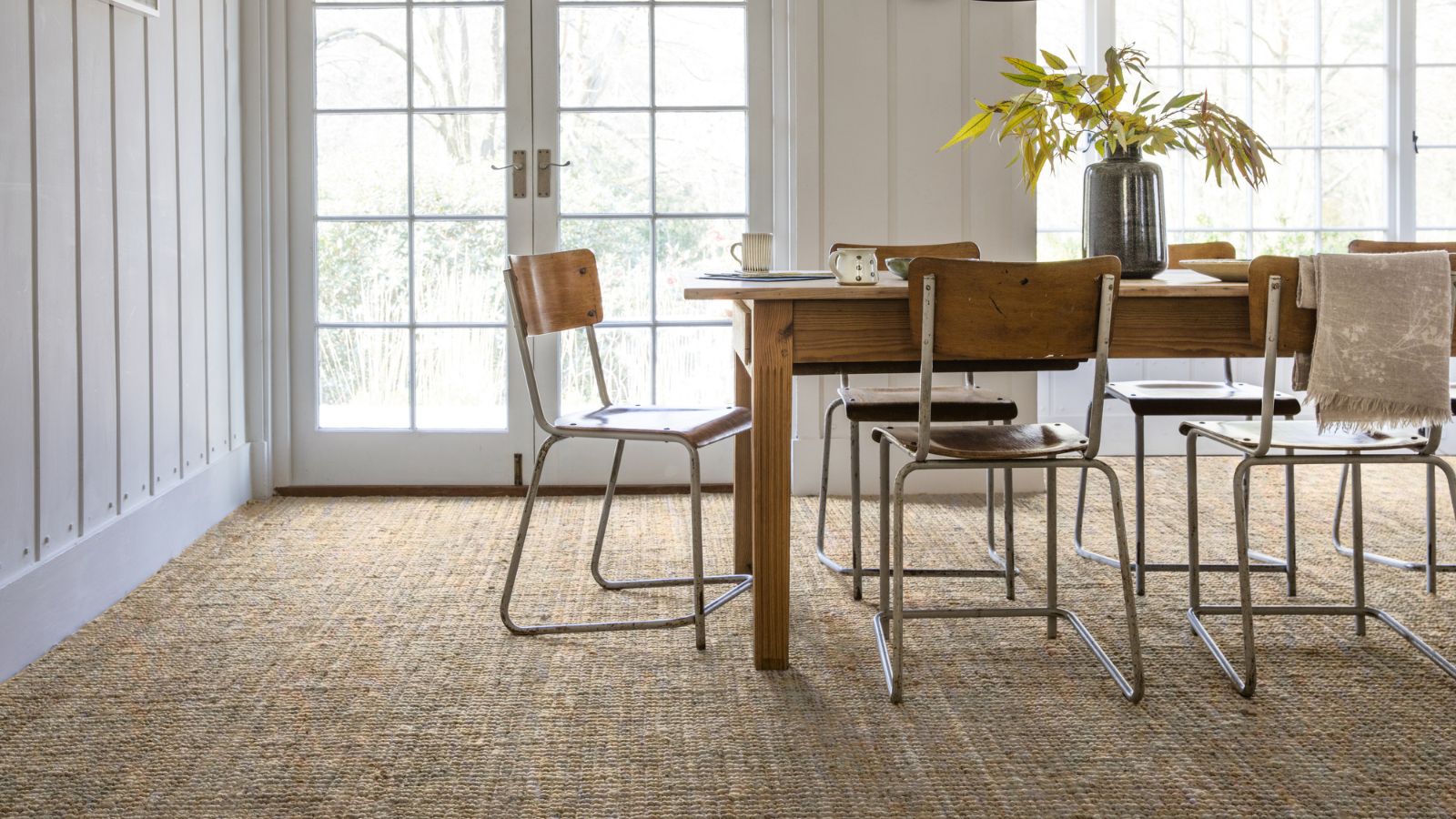How long does underfloor heating take to warm up?
Wondering how to get your home warm quickly? Here's how long it takes underfloor heating to warm up, what affects the speed and if there are ways of improving it
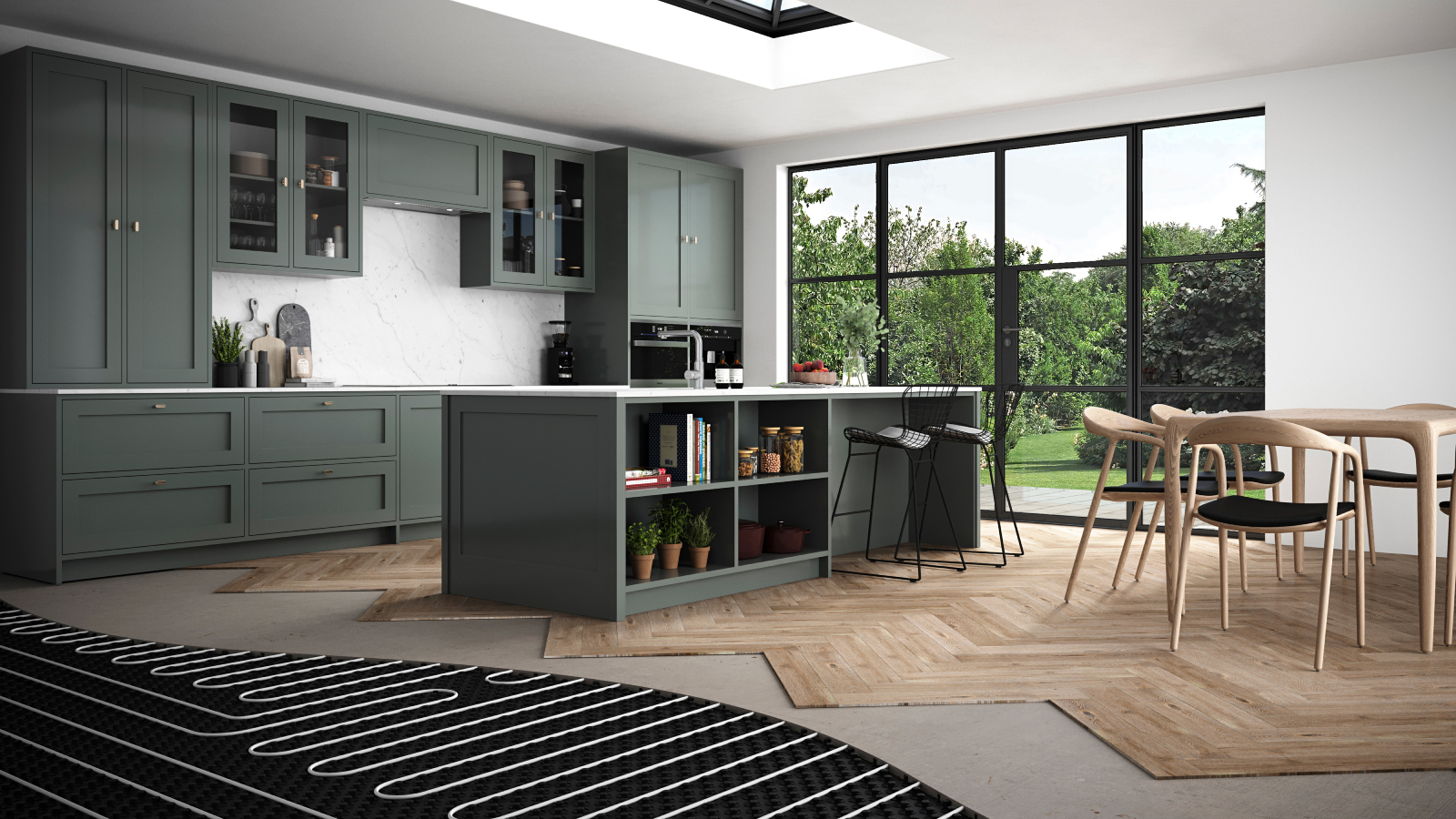
Whether you have electric or wet underfloor heating, run it in parallel with radiators or log burners or have it as the primary heating source for your home, your primary goal will be to get your heating to warm your home as quickly as possible.
But what affects how long your underfloor heating takes to warm up, which system is quickest and are there ways to avoid delays? Should you run it in a certain way and does faster underfloor heating lead to a hike in energy costs?
We spoke to two leading experts to find out just how long underfloor heating takes to warm up and what we can can do make it work most efficiently.
How long does underfloor heating take to warm up on average?
Although it would be nice to flick a switch and immediately have toasty toes, I know from experience of having a screed based wet underfloor heating system, it's not always the case.
"The warm-up time for underfloor heating varies depending on factors like system type, room size, and floor construction," explains Dan Clist, Nu-Heat system installation instructor. "There are high-output, wet underfloor heating systems that can offer response times similar to that of a traditional radiator system. Electric underfloor heating systems also generally offer quicker response times than water systems. However they can incur higher running costs and are better suited to smaller spaces."
Screed based underfloor heating on the other hand which involves embedding pipes into the screed results in a slower warm-up time. But is there an average time it takes underfloor heating to warm up?
Unfortunately, there isn't a general figure as each system is quite different. "Underfloor heating systems can take anywhere between 30 minutes to several hours to warm up to desired temperatures, depending on numerous factors such as the type of system, flooring type and insulation," says Tom Edmunds, heating expert and general manager at Wunda Group .
Bring your dream home to life with expert advice, how to guides and design inspiration. Sign up for our newsletter and get two free tickets to a Homebuilding & Renovating Show near you.
But why does each type differ and is there anything we can do to change this?
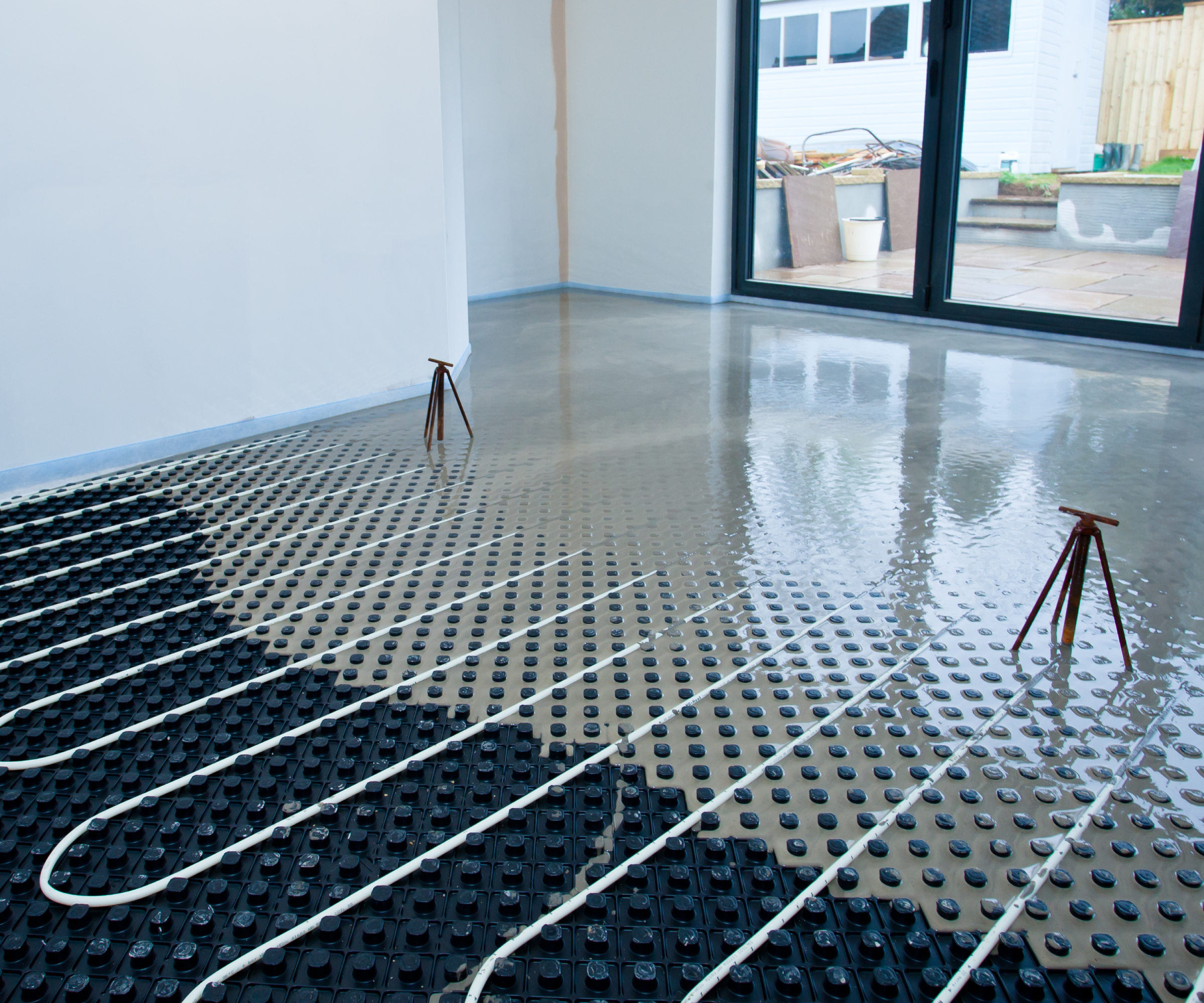

Dan Clist has 25 years’ experience as a heating engineer, helping homeowners and installers make the transition to UFH and renewable technologies, and empowering them to do it in the right way.

Tom has been the general manager at underfloor heating specialists Wunda Group for over 15 years, overseeing product development for the brand and becoming an expert on the heating industry in the UK in the process.
How long does a wet underfloor heating system take to warm up?
Underfloor heating installation for wet systems takes two forms. The pipes are either embedded in to the screed or take the form of an overfloor system which sits on top of the floor base, but below your final floor covering. Although both heat the water that runs through the pipes, the time they take to warm up varies.
"Water based and electric overfloor systems tend to be amongst the most popular and common systems in use, and heat the floor either by circulating heated water through plastic pipes or via a heated electric mat beneath the floor, essentially transforming the floor into a giant radiator," explains Tom Edmunds.
Screed wet underfloor heating
"The reason traditional screed systems are slower is because they rely on heating a thick concrete layer (screed)," explains Tom Edmunds. "Screed systems have been popular in the past, predominately for new build and extensions, as it is a low-cost addition to add pipes into the screed (concrete) that needs to be poured regardless, and makes the home seem more desirable.
"This has been justified in the past by calling the resulting warm screed a ‘thermal mass’," says Tom. "However, this is no gain to the user, it only holds the heat and energy you put in, rather than allowing you to use it when you want.
"The modern point of view now is that underfloor heating should not be buried in the fabric of the house. Doesn’t it seem strange to plaster over radiators or bury them in the wall?" asks Tom.
"With screed based underfloor heating you’ll typically be looking at a 2-3 hour warm up time," he suggests. "The issue many users find with these systems is that the heat is not on demand and is not controllable. If the room becomes too warm, the system also has a delayed response to being turned down.
"Users do not have heat when they want it, as well as needing to open windows when they try to cool their rooms down. Leading to wasted energy."
Overfloor wet underfloor heating
"However, water based overfloor systems, in comparison to their screed counterparts, are an increasingly popular option as due to the pipes' proximity to the floor surface, they offer a much quicker warm up time," explains Tom Edmunds.
"Over floor water-based systems also take as little as 30 minutes to warm up depending on the system and can be up to 60% cheaper to run than electric, making them more suitable than electric systems for heating larger spaces, such as the ground floor of a house.
"These systems are controllable and respond quickly to user demands," says Tom, "leading to a more efficient use of energy."
How long does electric underfloor heating take to warm up?
"Electric underfloor heating can take anywhere from 30 to 90 minutes to warm up, depending on wattage," says Tom Edmunds. " However, while electric systems offer similar heat up times to water-based overfloor systems, they come at a significant cost to run and are not as environmentally friendly.
Many homeowners may find electric underfoor heating systems more suitable for smaller spaces. If you're renovating a bathroom for example, and adding a tiled floor but don't have or need underfloor heating elsewhere, installing electric underfloor heating in a bathroom can be an easy solution to avoiding cold feet every day.
However, as they do have significantly higher running costs, it's wise to install them with a timer system so that you can choose when you run them, rather than heating the space continuously.
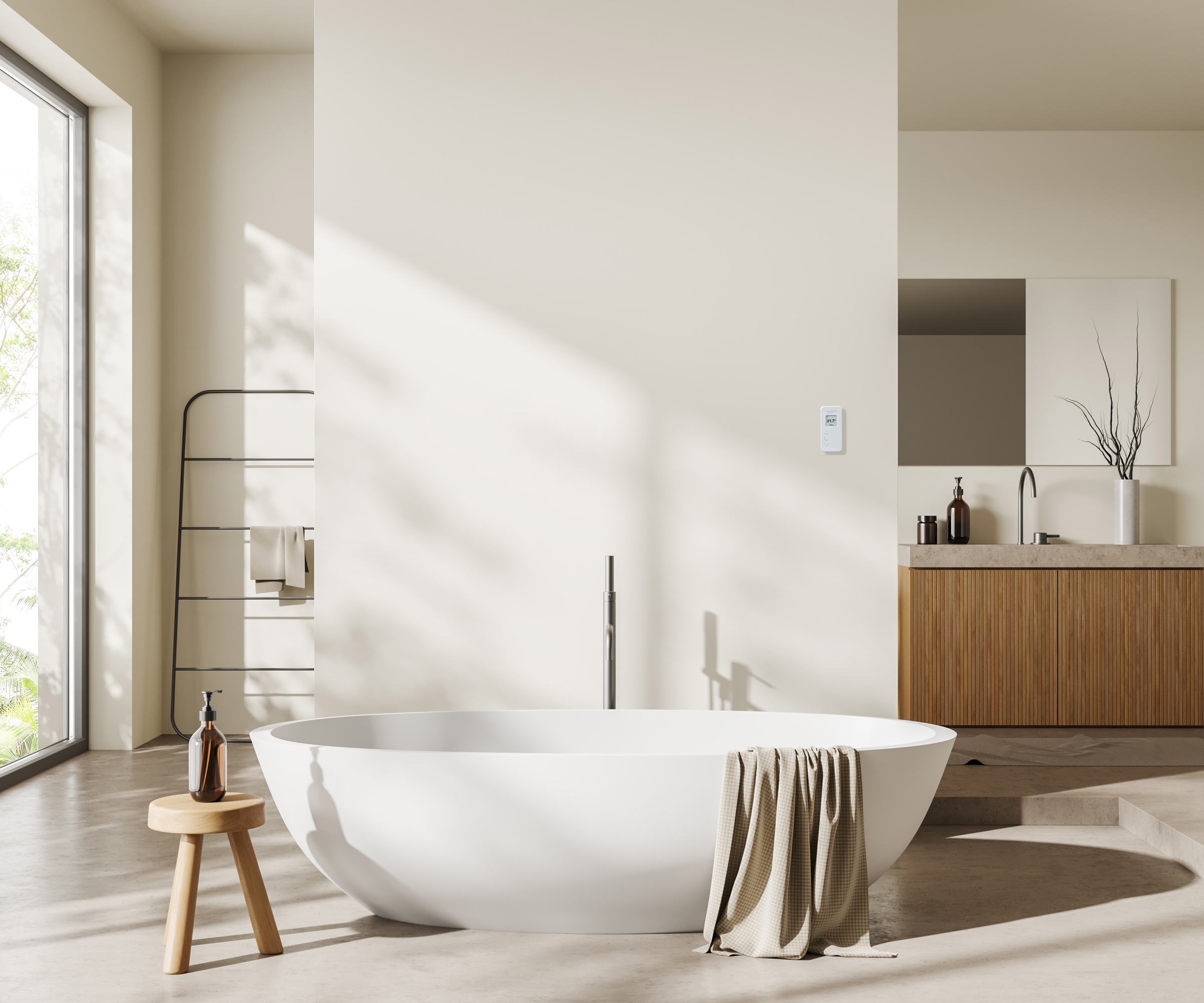
Factors affecting how long underfloor heating takes to warm up
"Factors such as floor covering, floor construction and heat source can impact the response time of an underfloor heating system," says Dan Clist, which is why it's always important to use a professional. "A qualified underfloor heating supplier should consider these factors during your system design to ensure optimal system performance," he adds.
Heat loss in a house can also be an issue. "Larger rooms with more glazing and/or poor home insulation will also experience greater heat losses," says Dan, "so a thorough system design will help mitigate these losses and improve warm-up time and heat retention, which is particularly important when retrofitting underfloor heating."
"If you’re having to leave the heating on all day as the rooms aren’t getting warmer or retaining heat, it would be worth investigating well insulated your home is and determining where you can make improvements," agrees Tom Edmunds.
"Very cold homes which already suffer from considerable heat losses will need to address these problems alongside considering underfloor heating, as no heating will fix a leaking home," he warns.
"Areas where heat is lost must be addressed first and foremost. Double glazing, cavity wall insulation, and insulating a loft will all improve heat loss in a house," says Tom. "If you have a cold house that is difficult to heat it may be advisable to invest in solving these problems before installing underfloor heating in your home."
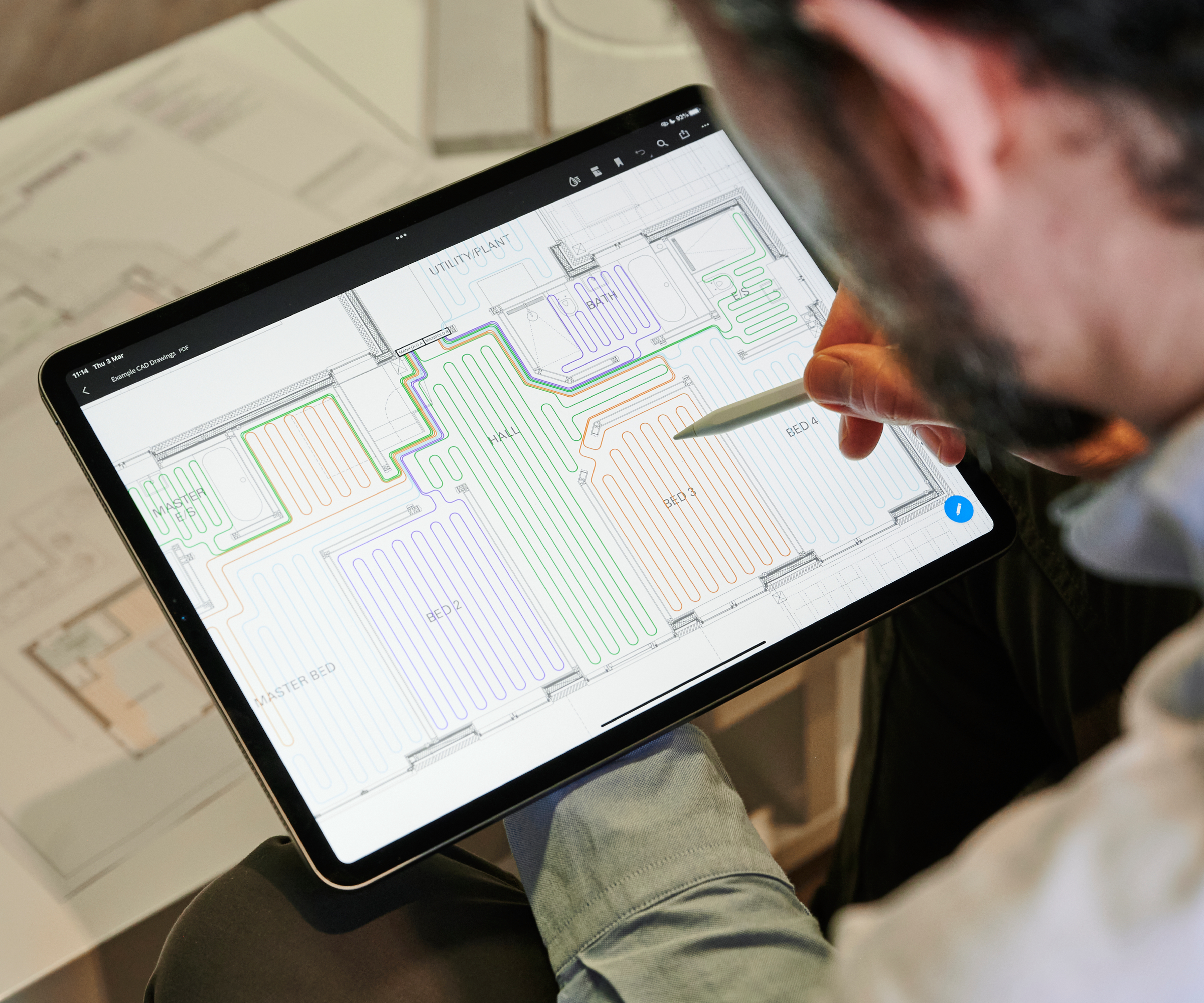
How to improve warm-up time
"Designing the system for the property is usually the best way to ensure optimal response times," says Dan Clist, "because the flow temperature will factor in the floor coverings, floor construction and type of heat source such as a boiler or heat pump."
Choosing a system such as Wunda's Rapid Response overfloor wet heating system which sits directly on top of the existing floor base and is constructed from lightweight, high density, aluminium foil covered boards with pre-routed channels for the heating pipes can also increase the warm-up time compared to a screed based system. Why? Because the heat radiates into the room and doesn't have to heat the screed up first.
But what are the other measures that can help?
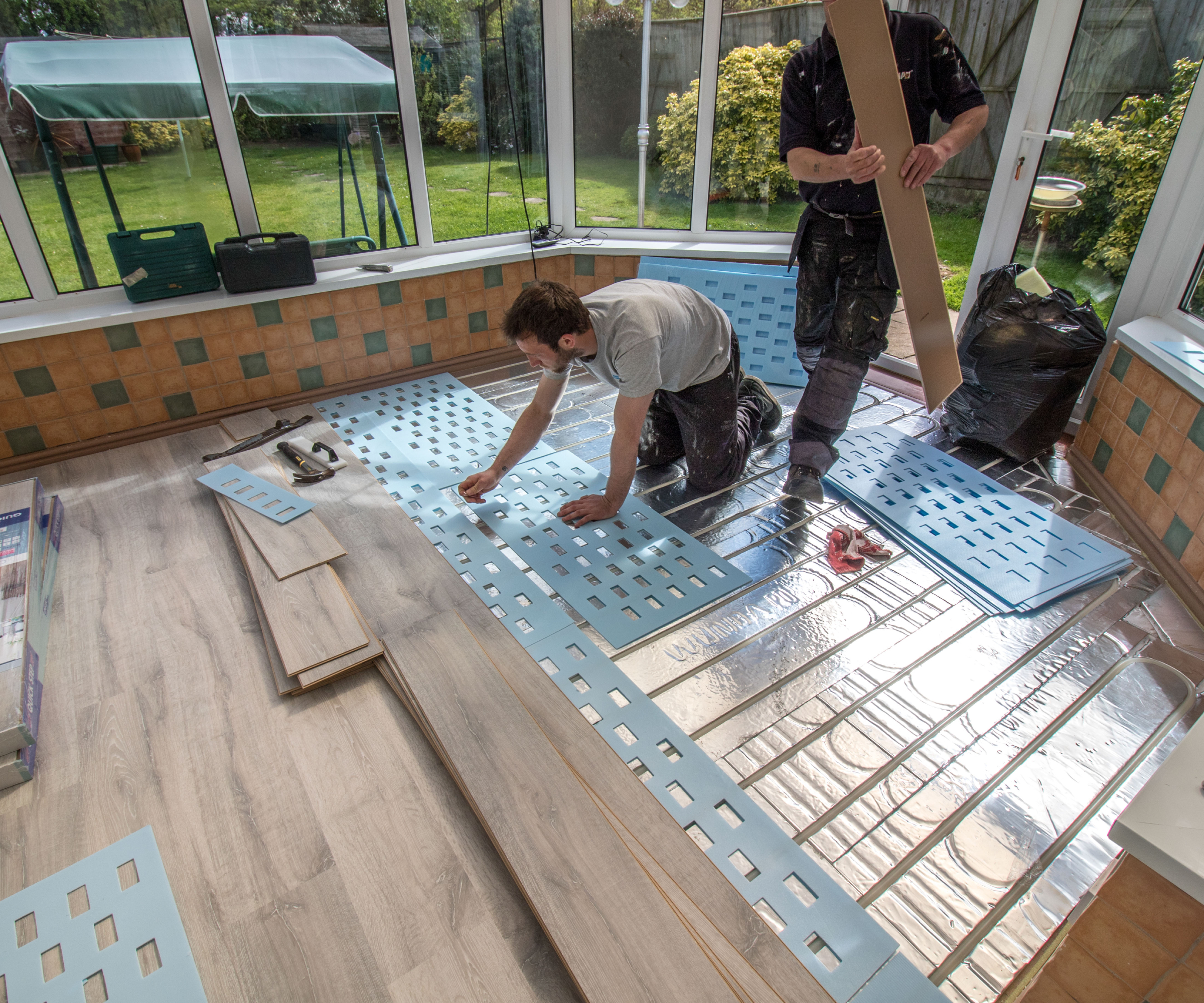
Choose the right flooring
"Beyond the system, selecting flooring materials that are highly thermally conductive and ensuring to insulate beneath the underfloor heating can enhance efficiency by minimising heat loss, allowing the heating system to work more effectively," says Tom Edmunds. "This is another great way of ensuring your system is going to heat and cool as effectively as possible.
The best flooring for underfloor heating involves choosing, "materials like ceramic, stone and tile all heat up quickly," he says, "making them a highly efficient choice, whereas underfloor heating with carpet and thicker wooden flooring can hinder the warming process due to their insulative properties."
Shop the best flooring for underfloor heating
Double down on insulation measures
Making sure windows and doors are properly insulated will also allow the heat to stay within the room, rather than escaping, and while "there's no guaranteed way to speed up the warm-up process, leaving underfloor heating running at a lower temperature for longer periods will keep your rooms at a comfortable temperature and improve the efficiency of the system," says Dan Clist.
Use zoning and a smart control system
Using a zoning system that allows individual room control with underfloor heating thermostats can also be of benefit as it means you can heat rooms at different times, and in advance of returning home so that the heat is there upon entry.
"Zoning is another effective method for temperature control, offering energy savings of up to 37%," suggests Tom Edmunds. "When combined with a smart heating schedule, zoning allows homeowners to heat only the rooms they use, significantly reducing costs.
"The issue with homes with a single thermostat is that the thermostat is often in the hallway, and rarely in the room you are trying to heat. This means, if you trying to relax in your living room and adjust the thermostat up, this sends heat around the whole home.
"Using a smart control system like WundaSmart, homeowners can instead specify varying temperatures for each room and schedule heating to start automatically, eliminating cold waiting times upon returning home or waking up. For instance, heating a single living room for 12 hours is far cheaper than heating the entire house," says Tom.

FAQs
Will turning up the temperature speed up the heating time?
Tempted to turn up the dial in order to generate more heat? Try to avoid this, says Tom Edmunds, as it won't give you the best results in the long term.
"You may feel inclined to increase the input temperature in order to achieve your desired warmth more quickly, but this will not be sustainable or affordable and won’t make your home heat up any faster than with radiators," warns Tom Edmunds.
"With screed systems, this can even lead to discomfort when the warmth does eventually pass through," says Tom, "creating uncomfortably warm rooms that cannot be cooled. This is not recommended."
Should I leave my underfloor heating on constant in the winter?
"To get the most out of your underfloor heating throughout the winter you should run your system constantly at a lower temperature for optimal efficiency and comfort," says Dan Clist "To do this, set thermostats to your desired temperature and any timers to constant."
Tom agrees this is the best approach for screed based systems, as it, "allows the floor and room to gradually reach and maintain a comfortable warmth, preventing the long wait times associated with heating from a cold start.
"However, whilst this eliminates delays in warmth, it isn’t a universally practical solution as it often results in you heating an empty home, and often comes with the adverse effects of creating a home that is too warm and unable to cool down without wasting heat by opening the windows," says Tom.
"Ultimately, this is a more costly and energy intensive method, which is why it’s important to consider exactly how you want to use your system before selecting your underfloor heating of choice."
Do systems that heat up more quickly cost more?
It might seem that faster-heating systems would cost more to run, but that’s not necessarily the case with underfloor heating costs say the experts.
"Rapid Response® underfloor heating systems are actually more cost-effective because they operate at lower input temperatures to achieve the same level of warmth," says Tom Edmunds. "While they heat up quickly, their efficient design reduces overall energy consumption during operation.
"This quick responsiveness allows the user to use the heating when they want to, resulting in faster heating without higher running costs, leading to savings on heating bills. Additionally, these systems maintain comfortable temperatures with less energy, making them a smart and efficient choice for homeowners seeking both comfort and cost savings that last for years to come.
"Additionally, the Rapid Response® system is a long-term saver because it immediately stops wasting latent heat as soon as the system is turned off," says Tom. "In contrast, less responsive screed-based systems can retain heat for hours, often forcing you to open windows if you want to cool down to release the excess heat you've spent time and energy building up."
Worried your underfloor heating seems to be taking longer than normal to heat up? Here's what the experts recommend.
"If you notice your system is taking longer to warm-up, it could be due a service. Water quality, filters and limescale can all impact warm-up times and should be checked as part of your annual service," says Dan Clist.
"It's also worth checking controls on thermostats, heat pumps and manifolds, just to ensure settings haven't inadvertently been altered. Lastly, choosing a supplier that offers lifetime aftercare service should always be a priority as it will give you peace of mind that issues that do come up can be dealt with," he adds.
If you're considering underfloor heating as part of a larger home heating renovation project, find out more about using underfloor heating with heat pumps and decide whether these log burner ideas could be a great addition to your overall plans.

Sarah is Homebuilding & Renovating’s Assistant Editor and joined the team in 2024. An established homes and interiors writer, Sarah has renovated and extended a number of properties, including a listing building and renovation project that featured on Grand Designs. Although she said she would never buy a listed property again, she has recently purchased a Grade II listed apartment. As it had already been professionally renovated, she has instead set her sights on tackling some changes to improve the building’s energy efficiency, as well as adding some personal touches to the interior.
